WFP supports women at the crossroads of climate change and hunger
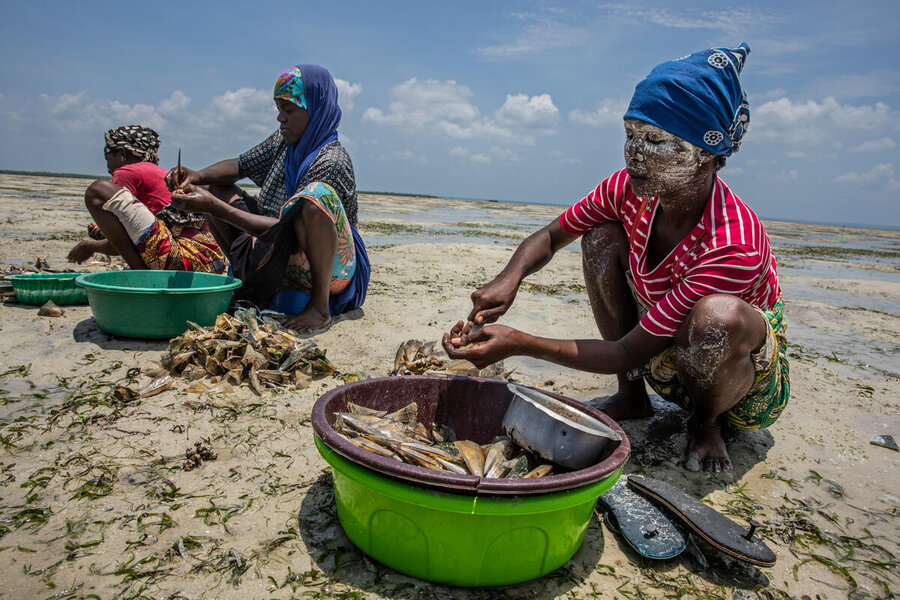
Their faces smeared with a traditional mussiro mask to enhance their skin, the women stoop to pluck shellfish from the mudflats of Ibo Island, off northern Mozambique. Dropped into plastic buckets, the dripping harvest will later be cooked and processed for sale, buttressing their incomes – and their independence.
Loans from WFP grow prospects for women in Rwanda
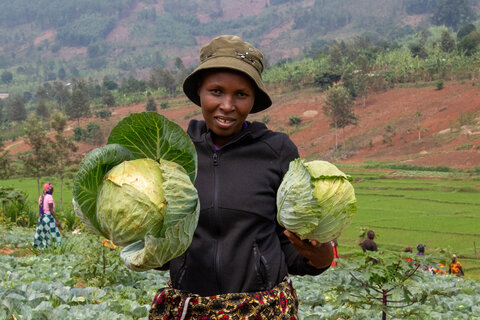
The baby-blue sky and lapping water paint a deceptive picture of calm.
In reality, these women have been plagued by both an ongoing insurgency gripping the region and, increasingly, by the devastating fallout of climate change. The World Bank estimates the climate emergency may push an additional 1.6 million people into poverty in this southern African nation by 2050.

That is not, however, what they’re focusing on. “The sea gives us something... we survive from the sea,” says Salima who, like many, fled to Ibo island a few years ago after an armed attack on her village. Her last name is being withheld for her protection. “This project is so important to us,” she adds of the shellfish business she learned with support from the World Food Programme (WFP).
From Mozambique to Bolivia, women are often the first and hardest hit by the crippling impact of climate change, which is also exacerbating existing gender inequalities. They often have the least say in climate decisions. Even women’s participation in UN climate conferences, including the latest COP28 in Dubai, has only marginally increased – from 30 to 35 percent – over the past decade.
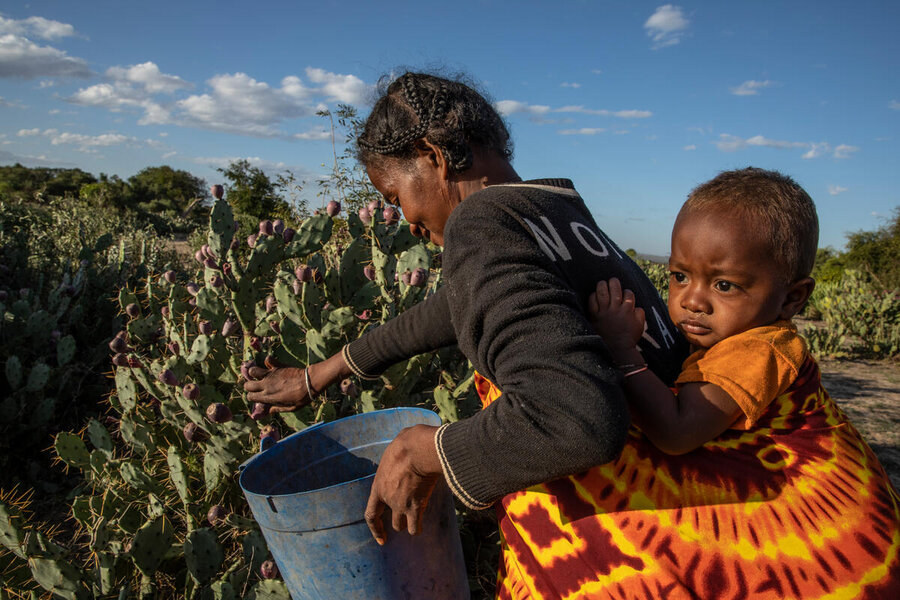
Yet women are fundamental to any sustainable climate solution, experts say. They are the ones closest to the land, water and other natural resources that are increasingly at risk. They are therefore the ones who also understand best the importance of preserving them.
Floods and droughts
“Women and girls are bearing the brunt of the climate crisis,” says WFP East Africa Senior Adviser Sibi Lawson-Marriott. “We’re supporting them in mitigating the impacts through our advocating and messaging, our programme design, in how we direct our resources, and by working with the women in their communities.”

In East Africa, where deadly floods have succeeded the worst drought in decades, WFP is rolling out climate-friendly projects like clean stoves, broadening women’s access to climate insurance and other services, and working with partners to address barriers preventing women from having equal control over land and other natural resources.
In Asia, in places including Nepal and Bangladesh, WFP and partners give women farmers hardier seeds and drip-irrigation tools, among other assets, to better adapt to weather extremes. In Latin America, we support indigenous women in diversifying their livelihoods, harnessing climate friendly practices passed down through generations, and learning new ones.

In Southern Africa, Mozambique counts among the countries in the world most vulnerable to extreme weather, from powerful cyclones to increased flooding and droughts – all of which threaten the country’s vital farming sector. Northern Cabo Delgado province, where Ibo Island is located, faces an additional menace: an ongoing conflict that has uprooted hundreds of thousands of people and fed soaring hunger levels.

But a WFP project, in partnership with the Government of Mozambique, has given displaced and other vulnerable women the tools to earn a living on Ibo Island.
Training and equipment to harvest and sell shellfish, process food, make ice and manage small businesses – along with the establishment of small desalination plants – offers skills women can use even if they are forced to move once again.
“Entrepreneurship supports women in their economic empowerment,” says project trainer Ana Mandala. “The knowledge they’ve acquired creates new opportunities for these women.”
Building skills
Elsewhere in the region, WFP also builds women's skills and resilience to climate shocks – from women-run irrigation schemes in Malawi to savings groups in Zambia – that help them expand and diversify their farming and other businesses.
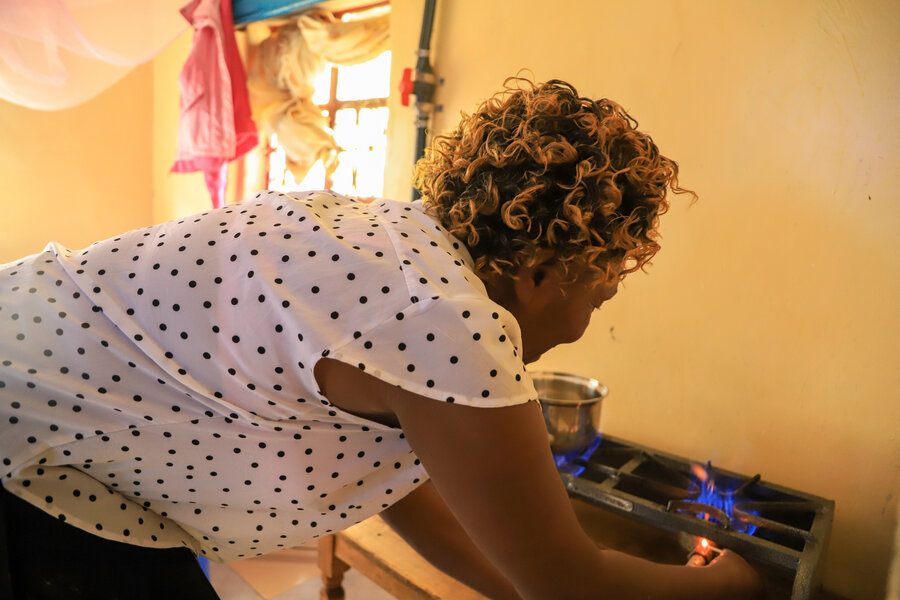
“Women are more conscious of what’s happening around them and the impact of climate change compared to men,” says Sandra Hakim, regional climate resilience adviser for WFP in Southern Africa. “Maybe because they feel responsible for feeding the household, and they know how it can impact food security.”
In East Africa, WFP is working to empower women so they can better access climate programmes, including insurance, drought-resistant seeds, and climate-smart agricultural practices, says WFP's Lawson-Marriott.

WFP has works with other UN agencies and humanitarian partners to study and better address barriers preventing women’s access to resources.
Here and elsewhere, WFP is also rolling out clean stoves, which reduce safety risks and environmental costs associated with women fetching firewood.
“It is easy to set up and needs little investment,” says Kenyan farmer Alpina Korgoren, who ditched wood for clean and renewable biogas fuel. “Waste from one cow can also power a lightbulb for an entire day.”
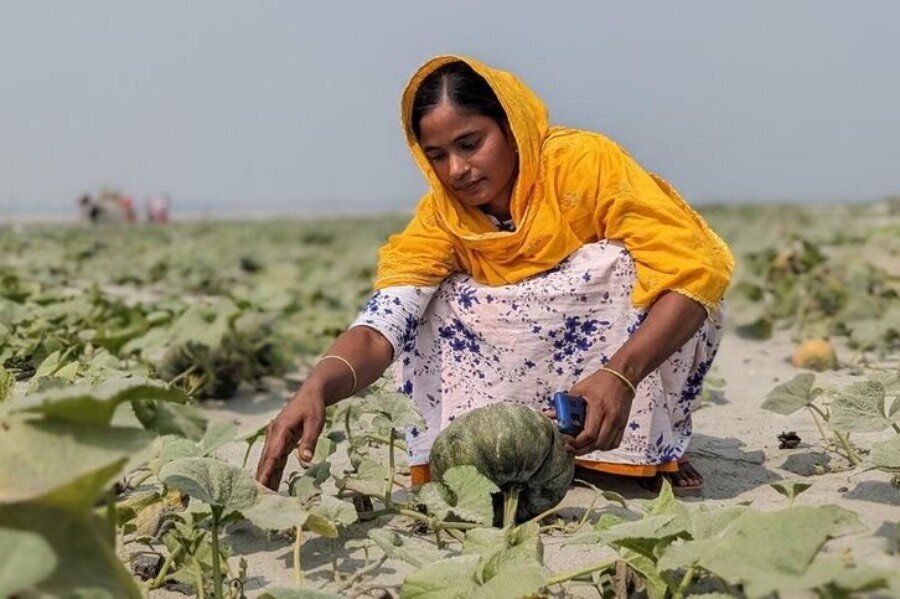
In Asia, women farmers like Tara Pariyar in Nepal are benefiting from a climate change adaptation project launched by WFP and Nepalese authorities. And in northwestern Bangladesh, women are benefiting from disaster-management training, climate insurance and livelihood initiatives – including farming pumpkins, which are drought-tolerant.
Indigenous solutions
In Latin America, WFP is working with smallholder female farmers, fisherwomen and others to shore up their resilience to climate extremes.
In Guatemala, we are training women growers to fly drones as part of a climate-monitoring and disaster-response programme. In Peru, we are working with women entrepreneurs in projects to also reduce food waste and enhance knowledge about nutrition.

In the Bolivian plateau, a WFP project teaches Uru women to make and sell handicrafts as a new income stream, now that a lake the community long depended on has dried up due to the changing climate. Other initiatives focus on water-harnessing systems like rainwater catchments and irrigation systems, along with fishing ponds.
Many of those WFP reaches, like the Uru women, come from indigenous communities, for whom the climate crisis has exacerbated longstanding discrimination and poverty – and whose knowledge, passed through generations, is invaluable.
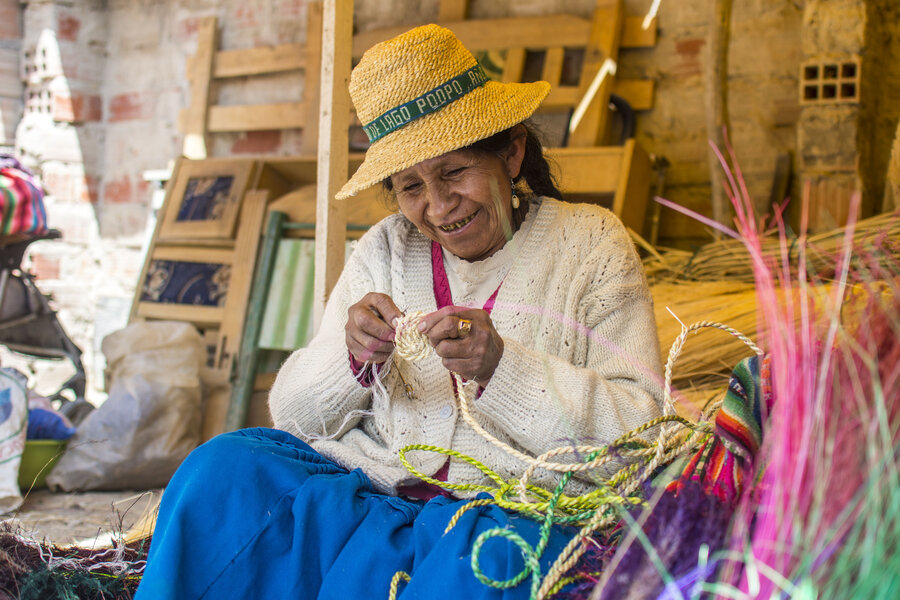
“Indigenous solutions are vital in the fight against the climate crisis,” says Dali Angel, a young leader from the Zapotec indigenous people in Mexico, who works with WFP to apply such solutions in the wake of climate shocks.
“We don’t see the environment as an economic resource,” she adds, “but as a part of our lives.”


